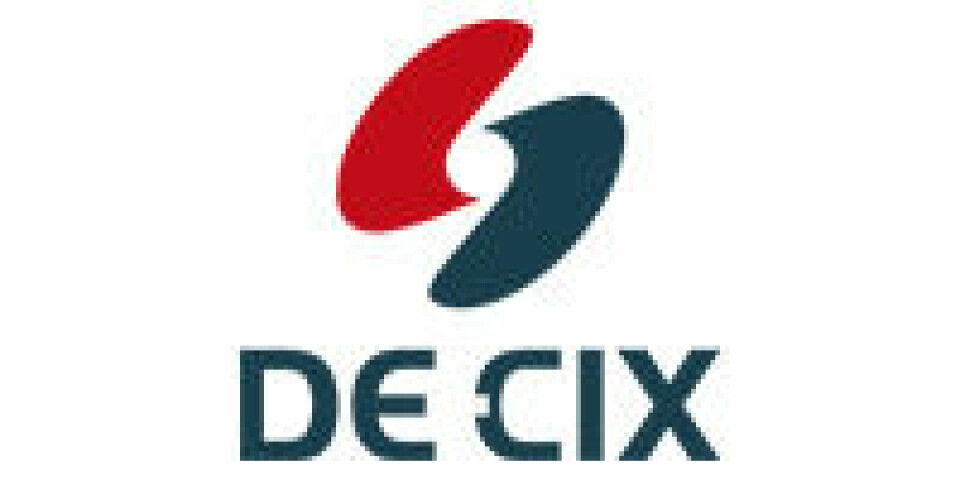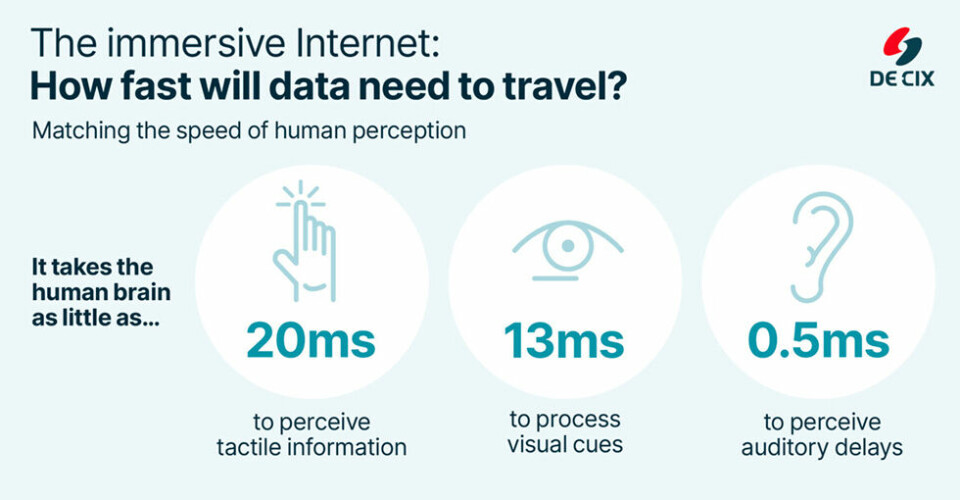-
How can enterprises safeguard their data and digital resources?
As enterprises exchange more and more data along their digital value chains, they need to take a closer look at how to protect their connections to trusted partners and to their digital resources in the cloud. How can an IX platform shield networks from a range of malicious and accidental security incidents?
-
How network automation makes cloud connectivity easy and safe
Digital infrastructure can be accessed in as-a-service models, enabling companies to rent machines for temporary requirements as needed. This business model is now also adopted in the network infrastructure domain in the form of network automation. Read more about the evolution of network automation at Cloud Exchanges and dedicated direct connections to the cloud.
-
Making connectivity fit for future digital business
Enterprises need great flexibility in all aspects of their connectivity to make it fit for the future – including the capability to adjust bandwidths, optimize latency, improve security, and reinforce the resilience of their connectivity in line with the business demands and application requirements.
-
3 Reasons why a multi-cloud strategy is a must for companies
Diversification allows you to spread your risks and bring together varying individual strengths, making you more resilient in the face of challenges. This is also necessary for companies on a technological level – to ensure the operational resilience of the digital infrastructure powering the future of business.
ANNONSEBILAG FRA DE-CIX

Beyond the digital frontier – get ready for the next-generation immersive Internet
The digital infrastructures that power today’s Internet represent the largest infrastructure mega-project in the history of the human race. But even this won’t be enough to support the applications that will emerge over the next decade of Internet evolution. How to build such a massive and highly interconnected global infrastructure?

Taken together, the digital infrastructures that power today’s Internet represent the largest infrastructure mega-project in the history of the human race. But even this won’t be enough to support the applications that will emerge over the next decade of Internet evolution. Ivo Ivanov, CEO of DE-CIX, the world’s leading Internet Exchange (IX) operator, looks at the challenges of building such a massive and highly interconnected global infrastructure, and offers a collaborative solution.
Today, more than ever before, all areas of business and private life rely heavily on digital applications. There is no doubt that, in future, the demands being made of digital infrastructure will intensify. The Internet of the future – a virtual universe by whatever name we choose to give it (be that the “Metaverse” or something else) – will be an immersive simulation enabled by AI, VR, AR, and all manner of innovations in the realm of sensory perception, remote control, and real-time virtual experience. The digital world of the future promises a wealth of opportunities to do business, be entertained, be cared for and educated, and be connected with one another in an unimaginably vibrant and tactile form of cyberspace. But to get there, data needs to be able to flow seamlessly, efficiently, and very fast – much faster than the blink of an eye – and do so everywhere.
High speeds are needed not only between a network or a business and its end users, but also between multiple networks or business partners. Current digital applications may still offer an acceptable user experience with a latency of no more than the blink of an eye (100 milliseconds), but certainly not a great one. Already today, a great user experience requires more like a maximum of 35 milliseconds latency, and with every innovation in virtual perception – visual, aural, tactile – the latency-sensitivity of applications increases. So, for the immersive virtual world of the future, low-millisecond latencies will be necessary for a seamless experience.
Everything digital needs to be faster than the blink of an eye
Why will tomorrow’s Internet be so much more latency-sensitive than today’s? Because of the nature of human perception. It takes the human brain as little as 20 milliseconds to perceive tactile information, 13 milliseconds to process visual cues, and even less, at less than a single millisecond, to perceive auditory delays. Therefore, creating a believable, authentic immersive environment will require replicating the fastest of these speeds, so that reactions and interactions can feel natural. Having achieved this kind of technological breakthrough, as yet undreamed-of applications will become possible. Lifestyle is already beginning to be defined through digital experience, and this will only intensify.
In terms of business cases, the marketing and customization of luxury goods and lifestyle through VR and digital twinning will blaze the trail, followed swiftly by entertainment and the arts, leading the Article way into this new world of immersive and interactive environments. The mass-product industry will follow shortly behind, enabling the mainstream to access these experiences. We can already become the proud owner of the digital twin of physical products we purchase – but in future we will be trying on clothes virtually, feeling the textures of fabric; experiencing and customizing the interior of the new mid-priced car before purchase; smelling a perfume. Even experiencing the aromas of our next meal before placing a restaurant booking. Research is well underway into future generations of VR to simulate the full range of human perception. The application of this will, in turn, lead to a massive increase in user expectations: demanding a quality of experience which cannot be served with the commodity infrastructure of the last century. Cooperation and convergence is the way forward for digital infrastructure What is needed to meet these demands? Big pipes and high-performance computing must get as close to the users and smart devices as possible. To create an experience that is seamless and authentic, digital infrastructure providers need to build out densely and globally distributed interconnected infrastructure, while at the same time offering an increasing array of specialized and customized interconnection services to meet the demands of business and organizations across all sectors. No single digital infrastructure operator can hope to offer all of this on their own. Instead, we are now entering the age of infrastructure community and alliances, leaving behind the silo-mentality of infrastructure incumbency.
Certainly, all digital infrastructure providers are called upon to continue their programs of expansion to offer increased access to digital services across a larger and denser geographical scope. We are finally seeing productive 5G networks – a technology that can bring high bandwidths and very low latencies to end users and devices, as long as the infrastructure supporting these networks also reflects these goals. The accelerating rollout of LEO satellite networks is another example of a wireless technology with enormous potential – given that it can play the role of either an eyeball access network or a backbone from space. All manner of new sub-sea cables are being laid on ocean beds around the world, and fiber must also see greater rollout in the FTTH/FTTB area. Added to this, with appropriate hardware and software upgrades to handle increasing traffic levels, 4G LTE mobile network infrastructure can also play its part in serving end users.

But none of these technologies can possibly serve the future needs of Internet usage on their own. For the future demands on data transfer, all of this and more will be needed, intelligently networked and orchestrated. While infrastructure providers everywhere need to ensure they maintain their business case and are ahead of their own competition, what is nonetheless required is a healthy mix of cooperation and convergence. In the long run, all kinds of network providers – be they fiber, mobile or satellite, be they last mile networks, backbone, or both – need to work in concert in an increasingly fine-grained manner to enable access, everywhere, to the Internet of the future. They will need to interconnect vastly more locally than has been the case until now. Just as the centralized cloud has needed to make room for fog and edge scenarios – each with their own important role to play in the delivery of IoT-based services – so too must network operators, content networks, and CDNs consider what roles they play in a much more finely interwoven mesh of pathways. Local interconnection – closer and closer to the end user – will become paramount in order to meet the latency requirements of future applications.
So far, we have only looked at the needs for networks to work in concert. But the same is also true of data centers – the logistics centers of the digital world. Without geographically distributed data centers for storage and caching, content and applications would not have a home close to the edge, close to the end user. Therefore, it will continue to be necessary to build more data centers of all shapes and sizes; centralized and decentralized, large hyperscalers, colocation data centers, container edge solutions, and shoe boxes in the basements of buildings, each with their own relevance for a variety of use cases. These data centers, dotted across the landscape, can then be used to house all that data which is needed to provide immersive experiences at low latencies. But they can also do more: they can house interconnection infrastructure and connect their customers into the woven fabric of digital infrastructure that will develop. Neutral and diverse digital ecosystems and interconnection will power the immersive Internet At DE-CIX, we are already working on our contribution towards this vision of a global digital future. We are taking a two-pronged approach to achieve this: firstly, through geographical densification – bringing services out of the major metropolitan hubs and into the regions, extending our footprint not only globally, but also locally – and, secondly, through the development of innovative interconnection services, tailor-made to support enterprises in overcoming the challenges they face with digital transformation. Through the growing number of our own locations as well as the locations available through our extensive partner program, DE-CIX is in a position to provide interconnection services where and when Article they are needed. This enables connected networks to also provide their services wherever their customers require them – as locally as possible, and as globally as required. DE-CIX and its hundreds of partners around the globe provide a model for the organization of data flows in the future: a greater density and diversity of networks which can be accessed locally via access points in geographically distributed data centers. Also, a greater geographical coverage of interconnection infrastructure through a carrier and data center neutral and distributed ecosystem, and a variety of scalable and customizable interconnection services to support all areas of digital transformation across sectors. All this can only be achieved through the power of digital ecosystems, like those that develop around DECIX’s data center and carrier neutral Internet Exchanges. Interconnection really is the conduit that enables digital infrastructure providers to deliver on the opportunity of the next digital frontier – the next-generation immersive Internet.
Get in touch
To learn more how we can help you to take control of your business-critical connectivity, contact our Copenhagen-based Business Development Manager, Erik Norup.
Email: erik.norup@de-cix.net
Phone: +45 40 20 48 04
https://www.de-cix.net/en/nordics



